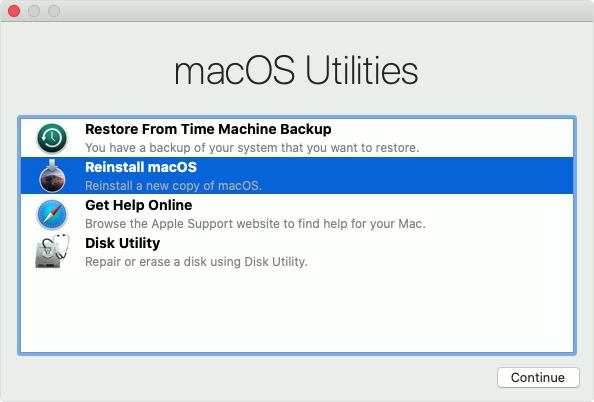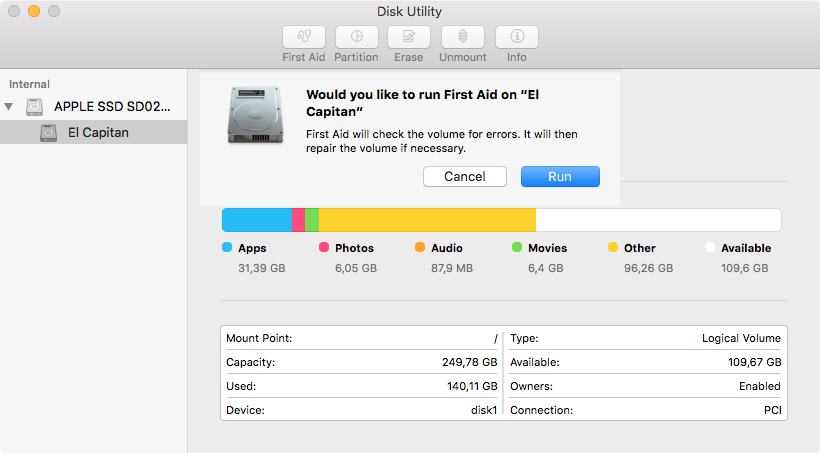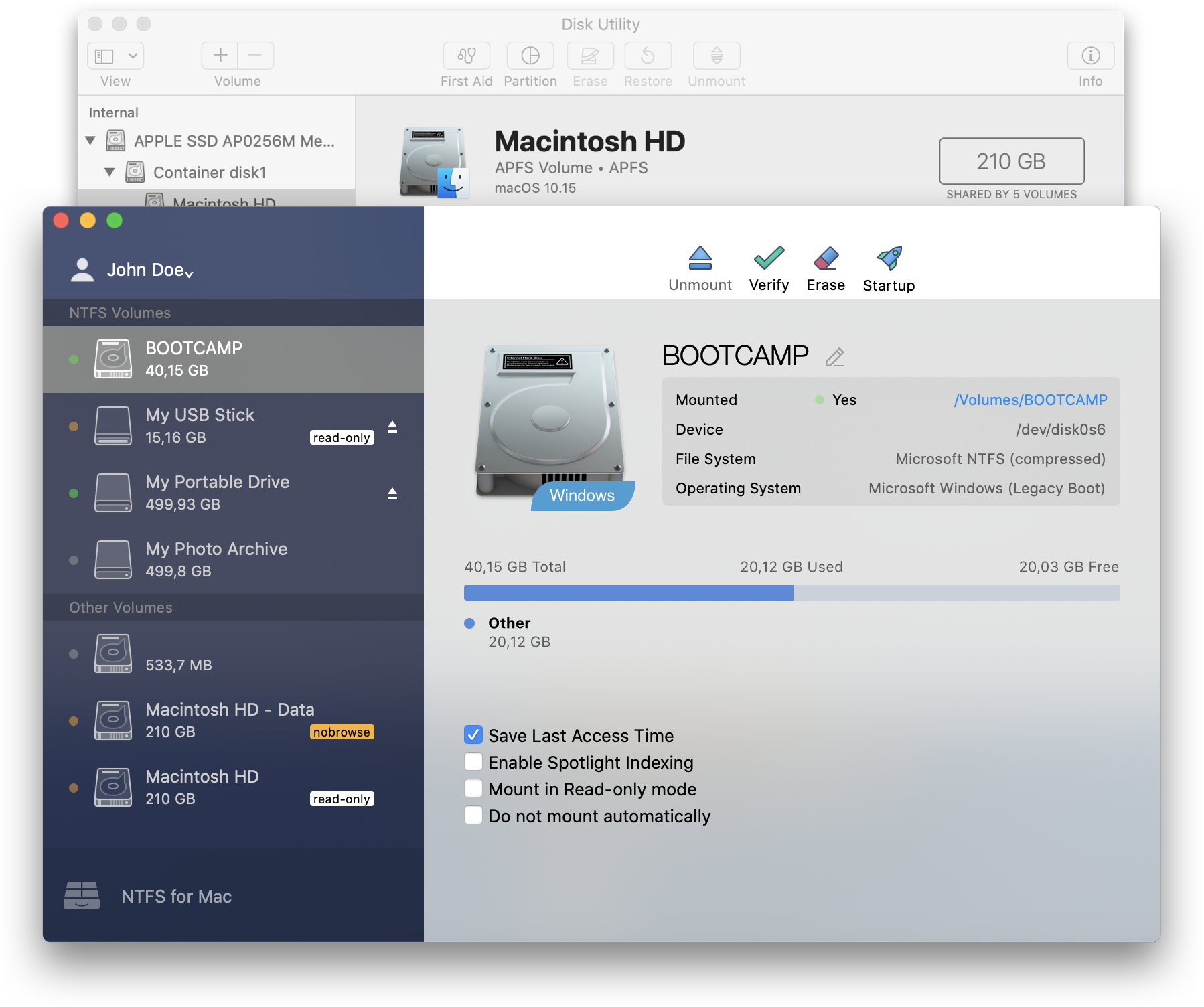You won’t regret cleaning pools of junk files from OS X El Capitan since cleaning Mac hard drive is a prolific activity and basic start of Mac optimization. However, if you look deeper into OS X El Capitan disk you will actually find difficult to identify between useful and junk files. Since looking and identifying junk files is confusing you might end up removing important files. This would be a sure short disaster, which is why you should be ensuring a complete updated backup of the Mac hard drive running OS X El Capitan. 10.11 or to reclaim Mac hard drive spaces, remove junk files, etc. try Mac cleaner software which is available free.

Jan 24, 2018 Download Mac OS X 10.11 El Capitan.ISO – Download El Capitan.DMG installer – El Capitan Torrent download – Without using Apple Store ID. OS X 10.11 El Capitan torrent download! Very shortly, in the following words, we show 2 methods to download and get Mac OS X 10.11 El Capitan. Jun 20, 2019 2: AppleHFS OS X Base System 250.1Gb disk0s2 /dev/disk1 (disk image): #: Type Name Size Identifier 1: untitled. +5.2Mb Disk1 It goes on for another 15 disk to 16 all maker identical to disk1. Also I cannot boot the Mac; it goes straight to recovery options and if I try starting it with r+CDM held it actually does nothing it seems.
Before you launch cleaning operation on Mac OS X El Capitan, right-click on the Time Machine icon from top – left of the menu bar and select BACK UP NOW. Wait for some-time so that Time Machine application performs full backup of your OS X El Capitan hard drive.
Now gather your strength and start Mac cleaning with.
Emptying Trash on OS X El Capitan
You know by pressing “Command + Shift + Option + Delete” keys, you can clean out all the files from the Trash without the use of mouse and its right click. This is helpful when you are sure that no important files exist to be resorted back from the trash. Otherwise manually take a tour of your trash folder so that you can restore important files back to their location and proceed with permanent deletion of files from the trash.
Which of the above trash looks cleaner and better on El Capitan? You decide.
Clean all unwanted files from Download folder
You might be busy in downloading the best Mac apps or videos for OS X El Capitan but did you remember to move all the used DMG and zip archive files to trash? Go to the Download folder and press-hold “Command + I” to get info of Download folder. No surprises, if you are surprised to check out the Size of the folder due to presence of unwanted files. Don’t spare a minute to send all of them to Trash and do empty it for free space collection.
Cleaning iTunes duplicate files
Music files can easily get duplicated in iTunes but don’t worry because iTunes can help you find them for removal. It’s very simple, see how: Launch iTunes << Click View << Click ShowDuplicateItems. The iTunes application will list up all the duplicate music files by name, artists or group items. To remove the duplicate files from the hard drive you first need to uncheck the original files and keep checked all the duplicate items. Now click on Edit from iTunes menu bar and click Delete. This is how to you says GOODBYE to duplicate files on iTunes using OS X El Capitan or below versions.
Let me share with you that there is an otherwise better solution to remove iTunes, iPhoto, iMovies, iWork and Aperture duplicate files by using Smart Finder application. Though small, it’s a helpful application that eliminates all kinds of duplicate files from OS X.
Cleans caches safely from El Capitan
There are pros and cons of removing old & news caches from Mac hard drive. The plus part is that your Mac OS X gets good amount of hard drive spaces by removal of large stockpile of caches. If your Mac hard drive is dying on free spaces, giving you hiccups or freezing at the best part of your OS X computing then you shall always go ahead to clean this culprit knows by the name – CACHES. Additionally, when your Mac hard drive have good amount of free spaces it will never ever disappoint you with the error message “Your startup disk is almost full” You need to make more space available on your startup disk by deleting files.
My recommendation is to register Stellar Speedup Mac utility for cleaning out caches from the OS X El Capitan home folder. This tool reaches to the deeper location of the hard drive where mouse cursor may not reach. Run this tool now and you will clean all the junks (including logs, unwanted language files, binaries, extensions and system junks) from the hard drive. After the use of Stellar Speedup Mac software all you will be left with a better and faster OS X El Capitan.
Coming back to the minus part of deleting the caches is some of the OS X apps, mostly browsers may behave slower than before. But don’t worry since creation of new and fresh caches will soon fill up the void.
Uninstalling useless application
Mac hard drive cleaning is incomplete without uninstallation of unwanted freeware, shareware, widgets and plugins. Show your Mac OS X that you care for its cleanliness and remove all sorts of useless and unused software to a location they deserve the most i.e. TRASH. Let me also remind you again to empty the trash.
Backup Mac OS X and fresh install OS X
Some misery of slowness never ends which is why you should go for fresh installation of the OS X El Capitan. Though technical, but simple procedure of cleaning an old copy of sluggish and freezing Mac and replacing it with new one. This post best describes the clean installation of OS X El Capitan. Be prepared for an OS X performance evolution and leave me your thoughts.
These advanced steps are primarily for system administrators and others who are familiar with the command line. You don't need a bootable installer to upgrade macOS or reinstall macOS, but it can be useful when you want to install on multiple computers without downloading the installer each time.

Download macOS
El Capitan Apple Update
Find the appropriate download link in the upgrade instructions for each macOS version:
macOS Catalina, macOS Mojave, ormacOS High Sierra
Installers for each of these macOS versions download directly to your Applications folder as an app named Install macOS Catalina, Install macOS Mojave, or Install macOS High Sierra. If the installer opens after downloading, quit it without continuing installation. Important: To get the correct installer, download from a Mac that is using macOS Sierra 10.12.5 or later, or El Capitan 10.11.6. Enterprise administrators, please download from Apple, not a locally hosted software-update server.
OS X El Capitan
El Capitan downloads as a disk image. On a Mac that is compatible with El Capitan, open the disk image and run the installer within, named InstallMacOSX.pkg. It installs an app named Install OS X El Capitan into your Applications folder. You will create the bootable installer from this app, not from the disk image or .pkg installer.
Use the 'createinstallmedia' command in Terminal
- Connect the USB flash drive or other volume that you're using for the bootable installer. Make sure that it has at least 12GB of available storage and is formatted as Mac OS Extended.
- Open Terminal, which is in the Utilities folder of your Applications folder.
- Type or paste one of the following commands in Terminal. These assume that the installer is still in your Applications folder, and MyVolume is the name of the USB flash drive or other volume you're using. If it has a different name, replace
MyVolumein these commands with the name of your volume.
Catalina:*
Mojave:*
High Sierra:*
El Capitan: - Press Return after typing the command.
- When prompted, type your administrator password and press Return again. Terminal doesn't show any characters as you type your password.
- When prompted, type
Yto confirm that you want to erase the volume, then press Return. Terminal shows the progress as the bootable installer is created. - When Terminal says that it's done, the volume will have the same name as the installer you downloaded, such as Install macOS Catalina. You can now quit Terminal and eject the volume.
* If your Mac is using macOS Sierra or earlier, include the --applicationpath argument, similar to the way this argument is used in the command for El Capitan.

Use the bootable installer
After creating the bootable installer, follow these steps to use it:
- Plug the bootable installer into a compatible Mac.
- Use Startup Manager or Startup Disk preferences to select the bootable installer as the startup disk, then start up from it. Your Mac will start up to macOS Recovery.
Learn about selecting a startup disk, including what to do if your Mac doesn't start up from it. - Choose your language, if prompted.
- A bootable installer doesn't download macOS from the Internet, but it does require the Internet to get information specific to your Mac model, such as firmware updates. If you need to connect to a Wi-Fi network, use the Wi-Fi menu in the menu bar.
- Select Install macOS (or Install OS X) from the Utilities window, then click Continue and follow the onscreen instructions.
Learn more
For more information about the createinstallmedia command and the arguments that you can use with it, make sure that the macOS installer is in your Applications folder, then enter this path in Terminal:
Catalina:
Mojave:
High Sierra:
Recovery Disc For Apple El Capitan Download
El Capitan: